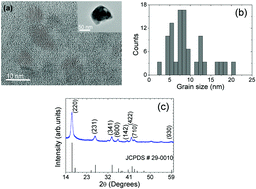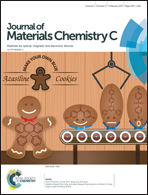Thermal sensitivity of frequency upconversion in Al4B2O9:Yb3+/Nd3+ nanoparticles
Abstract
We report measurements of frequency upconversion (UC) processes in ytterbium (Yb3+) and neodymium (Nd3+) doped Al4B2O9 nanoparticles – labeled as Al4B2O9:Yb3+/Nd3+ – prepared by a polymeric precursor method. The nanoparticles investigated contained 1 mol%Yb3+ and 2 mol%Nd3+. The samples were characterized by X-ray diffraction, high-resolution transmission electron microscopy, optical diffuse reflectance and photoluminescence. UC emissions in the range of 770 to 940 nm were studied by exciting the samples with a continuous-wave diode laser operating at 977.7 nm, on resonance with the Yb3+ transition 2F7/2 → 2F5/2. The linear dependence of the UC signals versus the laser intensity was investigated and the thermal sensitivity of the UC process was measured by changing the sample temperature from 26 to 60 °C. The UC photoluminescence behavior was understood to be due to the energy transfer from the excited Yb3+ to Nd3+ initially in the ground state manifold, in a process involving phonon-annihilation. The potential of the Al4B2O9:Yb3+/Nd3+ nanoparticles to be used as optical thermometers was favorably evaluated in comparison with other materials. A large average thermal sensitivity of 2.6 × 10−2 K−1 was achieved.

- This article is part of the themed collection: Materials and Nano Research in Brazil


 Please wait while we load your content...
Please wait while we load your content...